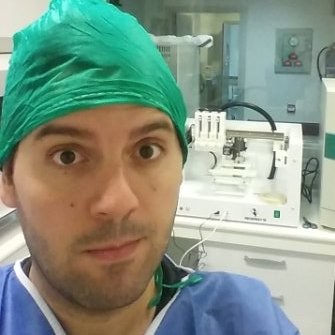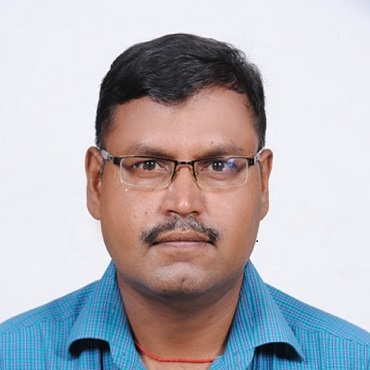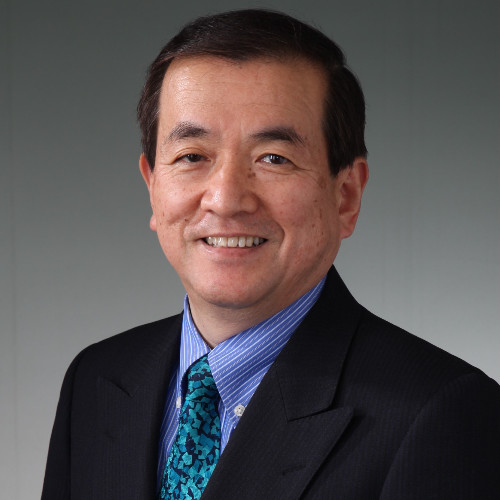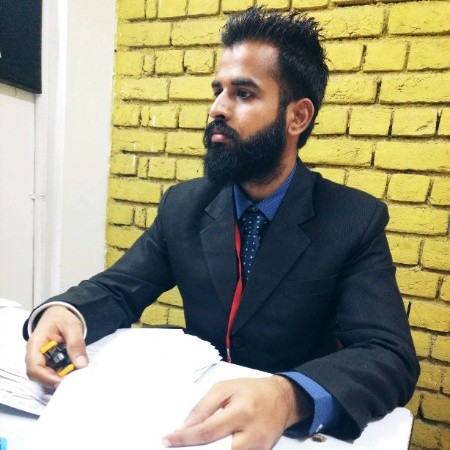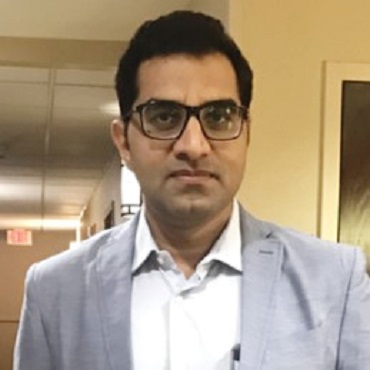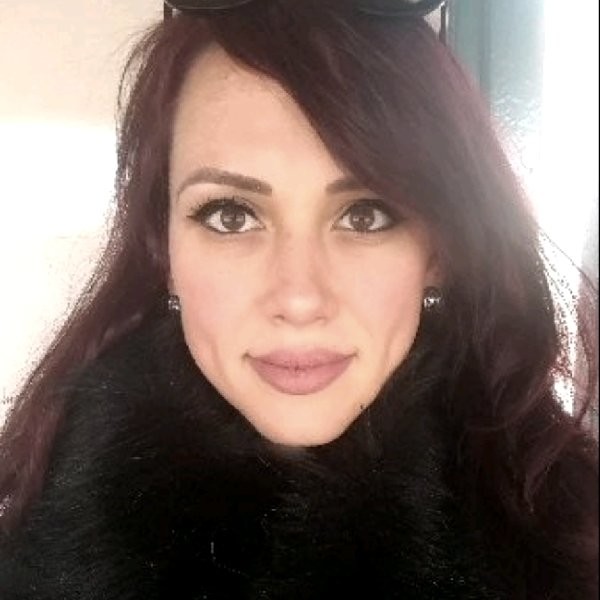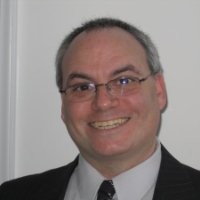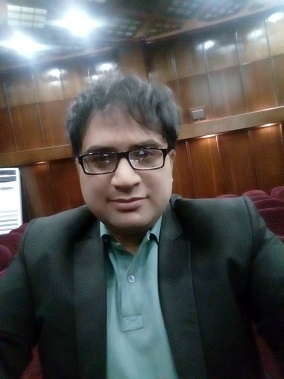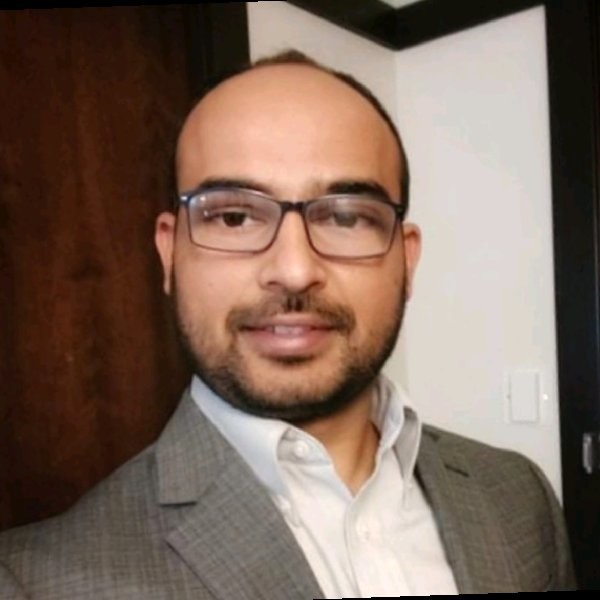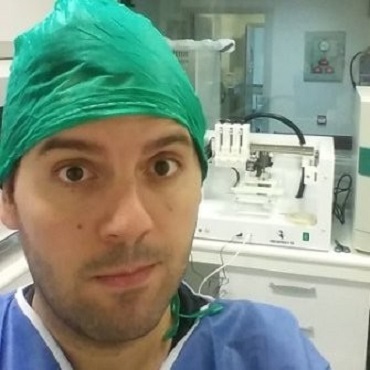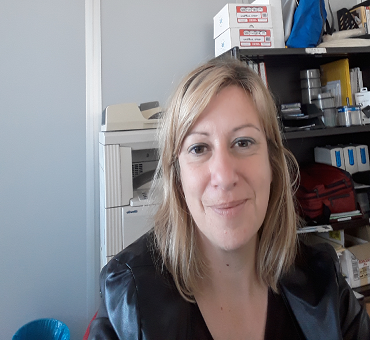Scientific Program
Keynote Session:
Title: An improved bio fabrication process to enhance cell survival of cartilage regeneration and functionality of the osteoarthritic knee when enriched with Bone Marrow
Biography:
Jose Manuel Baena, research associate "Advanced therapies: differentiation, regeneration and cancer" IBIMER, CIBM, Universidad de Granada. Founder of BRECA Health Care, pioneer in 3D printed custom-made implants for orthopaedic surgery, and REGEMAT 3D, the first Spanish bioprinting company. Expert in innovation, business development and internationalization, lecturer in some business schools, he is passionate about biomedicine and technology. In his free time, he is also researcher at the Biopathology and Regenerative Medicine Institute (IBIMER).
Abstract:
Tissue regeneration (TR) is currently one of the most challenging biotechnology unsolved problems. Tissue engineering (TE) is a multidisciplinary science that aims at solving the problems of TR. TE could solve pathologies and improve the quality of life of billions of people around the world suffering from tissue damages.
New advances in stem cell (SC) research for the regeneration of tissue injuries have opened a new promising research field. However, research carried out nowadays with twodimensional (2D) cell cultures do not provide the expected results, as 2D cultures do not mimic the 3D structure of a living tissue.
Some of the commonly used polymers for cartilage regeneration are Poly-lactic acid (PLA) and its derivate as Poly-L-lactic acid (PLLA), Poly (glycolic acids) (PGAs) and derivate as Poly (lactic-co-glycolic acids) (PLGAs) and Poly caprolactone (PCL). All these materials can be printed using fused deposition modelling (FDM), a process in which a heated nozzle melt a thermoplastic filament and deposit it in a surface, drawing the outline and the internal filling of every layer. All these procedures use melting temperatures that decrease viability and cell survival.
Research groups around the world are focusing their efforts in finding low temperature printing thermoplastics or restricted geometries that avoid the contact of the thermoplastic and cells at a higher temperature than the physiologically viable. This has mainly 2 problems; new biomaterials need a long procedure of clearance before they can be used in clinical used, and restrictions in geometries will limit the clinical application of 3D printing in TE.
Title: Structure-based Screening for Protein Phosphatase 1 Interactome Mapping
Biography:
Julia de Vasconcellos Castro research interests combine her scientific and chemical reaction engineering training and expertise to solve biological/ biomedical problems. Her work falls in a variety of categories including Metabolomics, Genomics, Proteomics, Microbiology, Biofuels, Tissue Engineering and Systems Biology. Particular efforts have been done in order to understand fundamental aspects of gene structures and organization in bacterial biopolymer synthesis and hydrogen production, the role of transcription factors in regulating protein expression, and how secondary metabolite production may be optimized using metabolic engineering tools. Currently, the focus of Dr. Castro’s research is to understand the molecular basis of the assembly of holoenzymes that turn serine/threonine protein phosphatases into specific enzymes to find novel ways to regulate them and develop new therapeutic approaches
Abstract:
Protein phosphatase-1 (PP1) is a prominent member of the Phosphoprotein Phosphatases family, and it catalyzes the majority of Ser/Thr dephosphorylation reactions. This broad range of functions is tightly regulated by its ability to form hundreds of holoenzymes by swapping a variety of regulatory subunits known as PP1-interacting proteins (PIPs). PIPs are seemingly unrelated in sequence and structure, but share a number of PP1-binding motifs (PP1-BMs). This common trait allows PIPs to combine multiple motifs and bind distinctive sites on PP1 surface to assemble unique holoenzymes. Although the majority of known PP1-BMs are unstructured short linear motifs (SLIMs), some are highly structured. Previous PP1 interactome mapping derives from high-throughput techniques combined with bioinformatics approaches that exploit SLIM PP1-BMs in proteome-wide screens based on sequence homology. Even though the number of known structured PP1-BMs is scarce when compared with the number of established SLIMs, it seems reasonable to expect that structural homology of proteins subunits (domains) could also be applied to expand the PP1 interactome. The present study explores structure-based PrePPI predictions to identify new PP1 interactors. PrePPI combines structural information with different sources of non-structural evidence to predict high-confidence interaction models. PrePPI predicts 17 models that recapitulate known holoenzymes and 127 novel interactions between PP1 and 70 putative PIPs. The analysis suggests that several proteins interact with PP1 via their ankyrin repeat domains, a known structured PP1-BM. Similarly, various proteins were proposed to interact with PP1through their PDZ domains in a manner previously unexplored. Most of the predicted PIPs contain established SLIM PP1-BMs, providing support for their physiological relevance, and additional novel PP1-BMs are proposed based on the analysis of the interaction models. This structural approach facilitates the mapping of a more complete PP1 interactome and provides the basis for novel therapeutic approaches to selectively modulate particular signaling cascades.
Title: Assessing clinical implications and perspectives of the pathophysiological effects of erythrocytes and plasma free hemoglobin in autologous biologics for use in musculoskeletal regenerative medicine therapies
Biography:
Peter Everts has been pioneering in the science and clinical applications of platelet-rich plasma technology since 1984 and has been leading research teams in regenerative medicine in using biological therapies.Everts received his Ph.D in Medicine from the University of Utrecht in the Netherlands in 2007 on the subject of PRP. At present, he has published and authored more than 50 articles, or book chapters. He has been board member, and chairman of several health care organizations and was member of the sport medicine steering group at the International Olympic Committee. At present he is the executive director of Gulf Coast Biologics, a scientific-educational-research-training institute, and chief scientific Officer of EmCyte corporation.
Abstract:
Autologous biologics, defined as platelet-rich plasma and bone marrow aspirate stem cell concentrate are cell-based therapy treatment options in regenerative medicine practices, and have been increasingly used in orthopedics, sports medicine, and spinal disorders. These biological products are produced at point-of-care; thereby, avoiding expensive and cumbersome culturing and expansion techniques. Numerous commercial PRP and BMSC systems are available but reports and knowledge of bio-cellular formulations produced by these systems are limited. This limited information hinders evaluating clinical and research outcomes and thus making conclusions about their biological effectiveness. Some of their important cellular and protein properties have not been characterized, which is critical for understanding the mechanisms of actions involved in tissue regenerative processes. The presence and role of red blood cells in any biologic has not been addressed extensively. Furthermore, some of the pathophysiological effects and phenomena related to RBCs have not been studied. A lack of a complete understanding of all of the biological components and their functional consequences hampers the development of clinical standards for any biological preparation.This lecture aims to review the clinical implications and pathophysiological effects of RBCs in PRP and BMSC; emphasizes hemolysis, eryptosis, and the release of macrophage inhibitory factor; and explains several effects on the microenvironment, such as inflammation, oxidative stress, vasoconstriction, and impaired cell metabolism.
Title: Early cancer screening and prophylactic immunotherapy – A stem cell approach
Biography:
He is the Managing Director of AutoStem Laboratories.
Abstract:
“Prevention is better than Cure”. This is more so applicable to inheritable Cancers, where a likely event could be predicted with close statistical probabilities. This study is an attempt that uses advanced prophylactic treatment options to look into the reduction in the frequency or statistical probability of development of cancer in the high risk group of female individuals with family history of BRCA1/2 mutations.Briefly, critical genetic insults and epigenetic alterations of somatic cell (or stem / progenitor cell) create primordial Tumor-initiating cell (TIC) with stem-cell like properties that in due course accumulate progressive genetic lesions that confers a growth and/or survival advantage over its normal counterparts, eventually developing into a full blown cancer. A cancer-initiating cell must survive long enough to accumulate three to seven genetic mutations necessary to generate cancer. Most terminally differentiated cells, even if they encounter mutations, are neither long-lived nor possess the ability to produce tumors with the limited number of divisions remaining in their differentiation program. In contrast, acquisition of longevity and extensive proliferative capacity of a somatic cell or a stem cell precursor make it an ideal candidate for cancer-initiating cell.Tumor initiating stem-like cells (TICs) are a small subset of precursor lesions which are capable of self-renewal and resistant to various chemotherapeutic drugs and radiation. This sub-population behaves like stem cells by undergoing either asymmetric or symmetric cell division thereby maintaining its population. Generation of TICs is an extremely rare event, though is greatly propelled by any inheritable or germinal mutation, such as BRCA 1/2 mutations, that provides a mutagenic background for superimposition of further insults. Naturally, over 25-45% of breast cancer (BC) patients below 35 years of age have hereditary origin involving BRCA1/2 mutation. Similarly, 80% of the families with the history of Ovarian Cancer (OC) have BRCA1 mutation and 15% of them with BRCA2 mutation. BRCA1 mutation carriers have an 18% risk (15% for BRCA2 mutation carriers) for developing BC up to the age of 39 years, and the risk increases to 59% (BRCA2 - 34%) at ages 40–49 years. Such an overt association calls for prophylactic measures to prevent the likely development of cancer.In this study, we aim at using Autologous Immunotherapy involving Dendritic Cells (DCs), Natural Killer (NK) Cells and Lymphokine Activated Killer (NAK) cells primed with allogenous breast and ovarian cancer antigens as prophylactic measures to activate host immune system in the normal but BRCA1/2 mutation careers against the likely development of neoplastic lesions, whose development frequency is statistically predicted. Our objective here is to demonstrate the efficacy of the immunotherapeutic regimen in reducing the statistical probability of development of the breast and ovarian cancer in the test individuals.
Title: Electronic water can reduce oxidative stress in cancer and diabetes patients for 3 weeks drinking
Biography:
Masahiro Onuma has expertise in oxidative disease prevention to use non-medical product based on GSK’s experience of Allopurinol which is the strongest anti-oxidant efficacy in this world. He creates new indication of allopurinol for stomatitis induced by cancer treatment which was approved by the Japanese cancer treatment committee to propose new mechanism of allopurinol for anti-oxidant. And now, there are so many new research papers of allopurinol in the world.
Abstract:
Oxidative stress means a state there is imbalance between the oxidizing action and the reducing action due to reactive oxygen species (ROS) in a living body, resulting in the oxidizing action becoming dominant. Oxidative stress arises as the balance between production and removal is disrupted through excessive production of ROS and impairment of the antioxidant system. Oxidative stress has been reported to be involved in the onset and progress of various diseases. Characteristics of Type 2 diabetes are insulin secretion failure and insulin resistance, but it seems that oxidative stress is greatly involved in insulin secretion failure. In the insulin secretion-inducing β cells of Langerhans islets in the pancreas, the amount of superoxide dismutase (SOD), which is representative of the ROS elimination system, is small and resistance to oxidative stress is considered to be weak. Regarding cancer, it is well known that chronic inflammatory conditions increase the risk of carcinogenesis. Cells such as neutrophils and macrophages are activated in the inflammation area leading to increase in production of active oxygen and nitric oxide. These free radicals cause DNA mutation and cell proliferation thereby promoting cancer development. When chronic inflammation is present, cancer develops more easily.
Electronic water, which was developed to generate electron in water, was consumed for three weeks, after meals, between meals and before sleeping 6 times a day, and according to the test subjects' possible time periods. The amount of drinking water was 750-1000 mL, and BAP and d-ROMs checks for all cases were carried out at 4:30 pm. The results of cancer patients and diabetes patients were seen as attached.
Oxidative stress means a state there is imbalance between the oxidizing action and the reducing action due to reactive oxygen species (ROS) in a living body, resulting in the oxidizing action becoming dominant. Oxidative stress arises as the balance between production and removal is disrupted through excessive production of ROS and impairment of the antioxidant system. Oxidative stress has been reported to be involved in the onset and
Title: Angiotensin converting enzyme (I/D) analysis and congenital heart diseases in Pakistani population
Biography:
Afsheen Arif has an expertise in rare genetic disorders. She has done her Ph.D on congenital heart disorders and their genetics in Pakistan for the first time. The unique genetic makeup of the patients from our population should have personalized methods of treatment. She has fifteen publication and five students currently working in her lab. Her future aims are to develop the genetic diagnostic setup for these patients
Abstract:
Angiotensin converting enzyme is a functional enzyme in renin-angiotensin system during heart regulation. It is a 21-kb long gene which encodes an enzyme, on long arm of chromosome 17. ACE gene comprises of 26 exons with 25 introns. Genomic studies found that on ACE intron 16, an insertion or a deletion of a 287-bp noncoding Alu repeat sequence effects enzyme activity [1]. This insertion/deletion polymorphism have a significant role in cardiovascular diseases, diabetes chronic obstructive pulmonary disease and skin disorders, Furthermore, it was reported that D allele has shown an association with elevated levels of plasma ACE [2,3]. Congenital heart diseases (CHDs) are the structural, functional and multifactorial defects, present at birth. Chromosomal aberration, alteration of gene (InDel, SNP) and environmental factors are some of the known causative agents of CHDs [4]. However, to date there is limited information on the association of InDel polymorphism of ACE gene in Pakistani population. Total 207 patients and 150 healthy controls were recruited in the study to test the hypothesis. The aim of the current research is to find the association of D allele of ACE insertion/deletion polymorphism with congenital heart disease. The allelic frequencies of patients are D allele 56.7% and I allele 43.2% in patients and D allele 76.6% and I allele 23.3% in controls, reveals that presence of D allele can be a factor for the disturbed levels of enzyme in patients. It is a need to be further explore its consequences.
Title: Baculovirus as a new stand-alone prophylactic and therapeutic immunostimulatory agent against malaria
Biography:
Talha Bin Emran has been working as an assistant professor in the Department of Pharmacy at the BGC Trust University Bangladesh. Dr. Emran has had his B.Sc. honors and M.S. in Biochemistry & Molecular Biology from the University of Chittagong, Ph.D from Graduate School of Medical Sciences, Kanazawa University, Japan.
Abstract:
Baculovirus which is an enveloped insect virus with a circular double-stranded DNA genome, possesses unique characteristics to induce strong innate immune responses in various mammalian cells and in mice. Aim: Here we show that the innate immune responses induced by BV not only eliminate Plasmodium liver-stage parasites but also elicit sterile protection against Plasmodium sporozoite infection through type I IFN signaling pathway. Methodology: Mice had infected with liver-stage parasites before 24h completely prevented blood-stage parasites following a single dose of BV intramuscular (i.m.) administration, which was much superior to primaquine, the only drug approved to eradicate liver-stage parasites. Findings: This BVmediated liver-stage parasite elimination was also observed in TLR-9-/- and iNOS-/- mice. In addition to the therapeutic effect, BV i.m. administration sterilely protects mice for at least 7 days from subsequence sporozoite infection, indicating the prophylactic effect. In vivo passive transfer with sera from mice i.m. administered with BV effectively eliminated liver-stage parasites and this effect was canceled by neutralization of IFN-a but not IFN-g in the sera, indicating a killing mechanism downstream of type I IFN signaling pathway. In fact, 6h after BV i.m. administration, both type I and II IFNs were robustly produced in sera and RNA transcripts of interferon-stimulated genes were drastically upregulated in the liver. Conclusion & Significance: Our results provide a great potential of BV for development of BV-based vaccine and anti-hypnozoite drug as a new stand-alone therapeutic and prophylactic immunostimulatory agent, which is applicable not only for malaria but also for other serious infectious diseases such as viral hepatitis.
Title: Production of agar from algal sea weed from coastal sites of Karachi
Biography:
Noureen Arif is a Ph.D student at Bahria University, Karachi ,Pakistan
Abstract:
Pakistan is the country rich in many natural resources out of these, seaweeds are one of the them. The luxuriant natural occurring algal resources can be utilized to produce compounds which are been imported in huge amount. This raw material along with proper extraction and purification serve the purpose in a crude manner. The study is based to produce agar and agarose compounds extracted from local red algal species like Gracilaria corticate, Gelidium pusilum. The coastal region has over sixty species of seaweed out of which red algal species are abundant [1]. The species Gracilaria corticate was seasonal in from 1989, 1990, 2000, 2012. It highest biomass was recorded in the month of April [2]. The biomass ranges from 5 to 60 g.m2. The study aims to optimize the procedure for the production of agar. The samples should be clean on site of collection to detached shells, sand and other algae. Dry the sample as soon as possible to prevent deterioration. Weigh the sample and calculate the impurities and then dry it [3]. After drying the samples will be bleached with lime and alkali treatment. The polysaccharides in Gracilaria species are agaroids and low in gel strength, it is treated with aqueous sodium hydroxide solution to remove the sulfate and the strength of gel increases by 10 folds which is better than Gelidium species. The one kg sample will be treated with 20% NaOH for 3 days and washed properly to remove traces and dried again, this product alkali treated seaweed is exported from Taiwan and Chile [4]. This process is summarized in the flow chart. The small scale production can be further taken up to large scale production and farming of the red algal, to strengthen blue economy in the country.
Title: The battle against different fungal diseases in wheat by both conventional and modern approaches
Biography:
He is a Ph.D student in Lovely Professional University,India
Abstract:
WHeat ranked 2nd in terms of global production and opted as primary staple food by many countries across the world. With the advent of technology and improved varieties the balance between wheat grain supply and demand was maintained in past few decades. However, rapidly increasing population and changing food habits are widening the gap between supply and demand. There is an urgent need of considerable increase in wheat production to fulfil the global food requirement. Many biotic and abiotic stresses diminishing the plant growth and grain yield. Among all biotic stresses, fungal diseases are most dangerous and widely spread throughout the planet. Fungal disease eradication and management with the help of both traditional and modern approaches can significantly increase the grain yield, as each year there is about 15-20% yield loss majorly due to rusts, blotches, smuts, blights and scabs. For the development of fungal disease resistant, varieties traditional breeding methods seems not as promising as they are labours and time consuming. However, increasing genomic information regarding wheat provided the platform for various genome editing and reverse genetic approaches. In this review, we described the impact of different fugal diseases and also discussed their management strategies.
Title: Implementing modern cell engineering and process development approaches for affordable and sustainable biosimilar manufacturing
Biography:
Sanjeev Gupta has obtained Ph.D. in Molecular Biology/Cell Line Engineering and M.Sc. in Applied Microbiology and Biotechnology. At present working as Sr. General Manager and Head, Advanced Biotech Lab (R&D-Biosimilar), Ipca Laboratories Ltd., Mumbai, India. Sanjeev Gupta has established a new world class state of the art Biotech R&D facility for the development of mAb Biosimilars. He is also actively involved in establishing modern and lean single use Bio-manufacturing facility for Biosimilar commercial launch.
Abstract:
Implementation of gene editing tools CRISPR and TALENS for cell line engineering and production improvement. Modern approaches for high producer cell line and robust upstream process development. Use of cutting edge technologies to improve biosimilar development and manufacturing . Factors influences protein expression and critical quality attributes including glycosylation of monoclonal antibodies mAb glycosylation and its overall Impact on biosimilarity and product performance. Case studies on titer and quality improvement at clone and process level for affordable biosimilar development.
Title: Dietary approaches to protect cell from oxidative stress
Biography:
Mojtaba Mafi graduated from Tehran University, School of Medicine with honor. He studied in neurosurgery ward and graduated with a score with thesis on Meningioma Brain Tumor during 6 years. With continuing his practice with special consideration on psychosomatic disorders, He completed many post graduate courses on health psychology, addiction medicine, sexual disorders therapy successfully and He passed many post graduate courses in Neuro, approved by Medical sciences university and He have been passed post graduate courses on Nutrition, Gastroenterology and hepatology, Obesity treatment and diabetes approved by Tehran University of Medical sciences.
Abstract:
DASH Diet encourages to reduce the sodium in diet and eat potassium, calcium and magnesium that help lower blood pressure.
The DASH Diet is also in line with dietary recommendation to prevent osteoporosis, cancer, heart disease, stroke and diabetes.
DASH Diet emphasizes vegetables, fibers, fruits and low-fat dairy foods.
The DASH Diet in lower sodium type, recommended just 1.5 gr Na per day. But in standard DASH, to keep daily Na intake to less than 2.3 gr/day.
The DASH consists of whole grains and sea foods (fish), poultry. Vegetables will be recommended in high amounts, full of fiber, vitamins and such minerals as potassium and magnesium. Fresh and frozen vegetables are both good choices.
DASH includes low fat diary products as good source of calcium, vitamin D and protein.
Cutting back on meat protein will allow room for more vegetables.
The DASH Diet encourages a small amount of nuts and seeds and red meat in small amounts.
Grains are naturally low in fat. Keep them this way by avoiding butter, cream and cheese sauces.
Title: Bacteria genus finding prediction to provide further progress of pathogenesis and biomedical applications
Biography:
Rassol Housen Pure is a Inventor & Author in the field of advanced medical science.
Abstract:
Pathogenesis of Bacterial infections are important source of significant human diseases and excellent opportunities to accomplishment at biotechnology and biomedicine. Advances in bacteria genus prediction will provide further progress of biological production. Recent research has assisted to clarify the predictions of bacterial taxonomy genus until 2030 involved in pathogenesis and biomedical applications. The analysis of the data gathered through the National center for biotechnology information taxonomy database since from 1992/01/01 to 2018/12/31 demonstrated There's a correct relationship between years with bacterial genus exploration analysis by regression and Durbin-Watson with analysis of variance and coefficients for dependent ariable of the bacterial genus and Predictors by years.
Keynote Session:
Title: Structure-based screening for protein phosphatase 1 interactome mapping
Biography:
Julia de Vasconcellos Castro research interests combine her scientific and chemical reaction engineering training and expertise to solve biological biomedical problems. Her work falls in a variety of categories including Metabolomics, Genomics, Proteomics, Microbiology, Biofuels, Tissue Engineering and Systems Biology. Particular efforts have been done in order to understand fundamental aspects of gene structures and organization in bacterial biopolymer synthesis and hydrogen production, the role of transcription factors in regulating protein expression, and how secondary metabolite production may be optimized using metabolic engineering tools. Currently, the focus of Castro’s research is to understand the molecular basis of the assembly of holoenzymes that turn serine/threonine protein phosphatases into specific enzymes to find novel ways to regulate them and develop new therapeutic approaches.
Abstract:
Protein phosphatase-1 (PP1) is a prominent member of the Phosphoprotein Phosphatases family, and it catalyzes the majority of Ser/Thr dephosphorylation reactions. This broad range of functions is tightly regulated by its ability to form hundreds of holoenzymes by swapping a variety of regulatory subunits known as PP1-interacting proteins (PIPs). PIPs are seemingly unrelated in sequence and structure, but share a number of PP1-binding motifs (PP1-BMs). This common trait allows PIPs to combine multiple motifs and bind distinctive sites on PP1 surface to assemble unique holoenzymes. Although the majority of known PP1-BMs are unstructured short linear motifs (SLIMs), some are highly structured. Previous PP1 interactome mapping derives from high-throughput techniques combined with bioinformatics approaches that exploit SLIM PP1-BMs in proteome-wide screens based on sequence homology. Even though the number of known structured PP1-BMs is scarce when compared with the number of established SLIMs, it seems reasonable to expect that structural homology of proteins subunits (domains) could also be applied to expand the PP1 interactome. The present study explores structure-based PrePPI predictions to identify new PP1 interactors. PrePPI combines structural information with different sources of non-structural evidence to predict high-confidence interaction models. PrePPI predicts 17 models that recapitulate known holoenzymes and 127 novel interactions between PP1 and 70 putative PIPs. The analysis suggests that several proteins interact with PP1 via their ankyrin repeat domains, a known structured PP1-BM. Similarly, various proteins were proposed to interact with PP1through their PDZ domains in a manner previously unexplored. Most of the predicted PIPs contain established SLIM PP1-BMs, providing support for their physiological relevance, and additional novel PP1-BMs are proposed based on the analysis of the interaction models. This structural approach facilitates the mapping of a more complete PP1 interactome and provides the basis for novel therapeutic approaches to selectively modulate particular signaling cascades.
Title: Structure-based Screening for Protein Phosphatase 1 Interactome Mapping
Biography:
Julia de Vasconcellos Castro research interests combine her scientific and chemical reaction engineering training and expertise to solve biological/ biomedical problems. Her work falls in a variety of categories including Metabolomics, Genomics, Proteomics, Microbiology, Biofuels, Tissue Engineering and Systems Biology. Particular efforts have been done in order to understand fundamental aspects of gene structures and organization in bacterial biopolymer synthesis and hydrogen production, the role of transcription factors in regulating protein expression, and how secondary metabolite production may be optimized using metabolic engineering tools. Currently, the focus of Dr. Castro’s research is to understand the molecular basis of the assembly of holoenzymes that turn serine/threonine protein phosphatases into specific enzymes to find novel ways to regulate them and develop new therapeutic approaches
Abstract:
Protein phosphatase-1 (PP1) is a prominent member of the Phosphoprotein Phosphatases family, and it catalyzes the majority of Ser/Thr dephosphorylation reactions. This broad range of functions is tightly regulated by its ability to form hundreds of holoenzymes by swapping a variety of regulatory subunits known as PP1-interacting proteins (PIPs). PIPs are seemingly unrelated in sequence and structure, but share a number of PP1-binding motifs (PP1-BMs). This common trait allows PIPs to combine multiple motifs and bind distinctive sites on PP1 surface to assemble unique holoenzymes. Although the majority of known PP1-BMs are unstructured short linear motifs (SLIMs), some are highly structured. Previous PP1 interactome mapping derives from high-throughput techniques combined with bioinformatics approaches that exploit SLIM PP1-BMs in proteome-wide screens based on sequence homology. Even though the number of known structured PP1-BMs is scarce when compared with the number of established SLIMs, it seems reasonable to expect that structural homology of proteins subunits (domains) could also be applied to expand the PP1 interactome. The present study explores structure-based PrePPI predictions to identify new PP1 interactors. PrePPI combines structural information with different sources of non-structural evidence to predict high-confidence interaction models. PrePPI predicts 17 models that recapitulate known holoenzymes and 127 novel interactions between PP1 and 70 putative PIPs. The analysis suggests that several proteins interact with PP1 via their ankyrin repeat domains, a known structured PP1-BM. Similarly, various proteins were proposed to interact with PP1through their PDZ domains in a manner previously unexplored. Most of the predicted PIPs contain established SLIM PP1-BMs, providing support for their physiological relevance, and additional novel PP1-BMs are proposed based on the analysis of the interaction models. This structural approach facilitates the mapping of a more complete PP1 interactome and provides the basis for novel therapeutic approaches to selectively modulate particular signaling cascades.
Title: The cell Image library: An open source central repository and research platform for microscopy images
Biography:
David Orloff has worked on the Cell Image Library since its inception. His past positions have included communications and outreach, project management, product development, publishing, educational materials development, and managing contractual arrangements. He actively seeks collaborators for the Library including image submission as well as research tool collaboration.
Abstract:
The Cell Image Library (CIL) is a public and easily accessible resource database of images, videos, and animations of cells, capturing a wide diversity of organisms, cell types, and cellular processes. The purpose of this database is to advance research on cellular activity, with the ultimate goal of improving human health. This comprehensive and easily accessible Library is designed as a public resource first and foremost for research, and secondarily as a tool for education. The long-term goal is the construction of a library of images that will serve as primary data for research. A discussion of the development of the open source library, and a demonstration of the features focusing on large data sets will be presented. Lastly, there will be a discussion of new tools that have been incorporated to interact with the data in the CIL to aid in original research will be presented.
Title: Cellular pathology of Alzheimer's disease
Biography:
Mojtaba Mafi graduated from Tehran University, School of Medicine with honor. He studied in neurosurgery ward and graduated with a score with thesis on Meningioma Brain Tumor during 6 years. With continuing his practice with special consideration on psychosomatic disorders, He completed many post graduate courses on health psychology, addiction medicine, sexual disorders therapy successfully and He passed many post graduate courses in Neuro, approved by Medical sciences university and He have been passed post graduate courses on Nutrition, Gastroenterology and hepatology, Obesity treatment and diabetes approved by Tehran University of Medical sciences.
Abstract:
Macroscopic Brain appearance in Alzheimer's disease is cortex atrophy with Sulcuses widening is more prominent in frontal, temporal and parietal lobes. Secondary to severe atrophy, we can see ventricles compensatory widening. Extracellular: Neurotic plaques. Intracellular: Neurofibrillary tortuosity, filaments Neurotic plaques: focal and spherical accumulation of dilated neural branches with amyloidosis center. This amyloid center is consisting of B amyloid. In surrounding of these plaques, we find microglial cells and reactive astrocytes. Neurofibrillary filaments: Coupled tortuosed filaments in neurons cytoplasm was seen as basophilic structures. These filaments push cell nucleus protein phosphorylation was seen also.
Title: Efficient method for generating reporter based human hematopoietic stem cells for high throughput screening platform
Biography:
Dharmesh kumar Patel have gained professional experience in the field of stem cell, neuroscience and cancer immunology where He have been involved in generating and characterizing various pluripotent stem cells, immune and neural cell types using mass flow cytometry as well as Immunofluorescence microscopy. His experience has cultivated his passion for Stem cells-Immunology-Neuroscience and translating this field of science in to the clinic.
Abstract:
Pluripotent stem cells (PSCs) represent an alternative hematopoietic stem cell (HSC) source or treating hematopoietic disease due to their ability to both self-renew and differentiate. Here we generated induced pluripotent stem cells from a specific subtype of T cells, T stem cell memory (TSM) cells and characterized their pluripotency. Further, we have developed a step wise differentiation method for hemogenic endothelium CD34+ cells. We have employed tightly controlled optimized protocol using cytokines, growth factors and cellular signaling to generate authenticate CD45+ hematopoietic stem cells. Runt-related transcription factor 1 (Runx1) is a master hematopoietic transcription factor essential for hematopoietic stem cell (HSC) emergence. To monitor the onset of HSC generation we had targeted mCherry and GFP reporters under the RUNX1 primitive (P1) and definitive (P2) promoter elements respectively. Our initial targeting strategies were resulted in none of the reporter gene expression upon the differentiation into HSCs due to promoter silencing issue. We have circumvented the promoter silencing via use of site specific targeting into AAVS1 locus using CRISPER-Cas9 system. Overall, we have produced an efficient method to generate hematopoietic CD34+ followed by CD45+ definitive HSCs with the GFP+ reporter gene expression. This robust system could be utilized for small chemical compounds, macro molecules high throughput screenings.
Title: An improved bio fabrication process to enhance cell survival of cartilage regeneration and functionality of the osteoarthritic knee when enriched with Bone Marrow
Biography:
Jose Manuel Baena, research associate "Advanced therapies: differentiation, regeneration and cancer" IBIMER, CIBM, Universidad de Granada. Founder of BRECA Health Care, pioneer in 3D printed custom-made implants for orthopaedic surgery, and REGEMAT 3D, the first Spanish bioprinting company. Expert in innovation, business development and internationalization, lecturer in some business schools, he is passionate about biomedicine and technology. In his free time, he is also researcher at the Biopathology and Regenerative Medicine Institute (IBIMER).
Abstract:
Tissue regeneration (TR) is currently one of the most challenging biotechnology unsolved problems. Tissue engineering (TE) is a multidisciplinary science that aims at solving the problems of TR. TE could solve pathologies and improve the quality of life of billions of people around the world suffering from tissue damages. New advances in stem cell (SC) research for the regeneration of tissue injuries have opened a new promising research field. However, research carried out nowadays with twodimensional (2D) cell cultures do not provide the expected results, as 2D cultures do not mimic the 3D structure of a living tissue. Some of the commonly used polymers for cartilage regeneration are Poly-lactic acid (PLA) and its derivate as Poly-L-lactic acid (PLLA), Poly (glycolic acids) (PGAs) and derivate as Poly (lactic-co-glycolic acids) (PLGAs) and Poly caprolactone (PCL). All these materials can be printed using fused deposition modelling (FDM), a process in which a heated nozzle melt a thermoplastic filament and deposit it in a surface, drawing the outline and the internal filling of every layer. All these procedures use melting temperatures that decrease viability and cell survival. Research groups around the world are focusing their efforts in finding low temperature printing thermoplastics or restricted geometries that avoid the contact of the thermoplastic and cells at a higher temperature than the physiologically viable. This has mainly 2 problems; new biomaterials need a long procedure of clearance before they can be used in clinical used, and restrictions in geometries will limit the clinical application of 3D printing in TE.
A PHP Error was encountered
Severity: 8192
Message: trim(): Passing null to parameter #1 ($string) of type string is deprecated
Filename: pastconference/past-program-schedule.php
Line Number: 239
Backtrace:
File: /efsdata/meetingsint-com/application/views/pastconference/past-program-schedule.php
Line: 239
Function: trim
File: /efsdata/meetingsint-com/application/controllers/Pastconference.php
Line: 128
Function: view
File: /efsdata/meetingsint-com/index.php
Line: 317
Function: require_once
Title: Biobanks, data sharing and the risks of privacy breaches: rules and models to control security in the -omics era
Biography:
Elena Salvaterra Robust experience as regulatory project manager in clinical research with a focus on human biobanks. Relevant experience as marketing and sales specialist in biomedical and biotech field. Equipment, services. Good knowledge of IT infrastractures applied to scientific medical and lab fields as well as to chemical, food, manufacturing industries
Abstract:
The concept of personalized medicine has brought about a paradigm shift from curing to prevention in medical field. This concept which focuses on preventive medicine has been dramattically improved by the recent development of genome and omics analyses, bioinformatics and biobanks.
According to this prospect, large scale integration of health and genome/omics data is becoming common in today practices and it raises privacy violation risks.
This talk would like to focus on rules (e.g., HIPAA, GDPR, Nih Security best practices for controlled-access data) and methods which relate to potential privacy breaches in order to identify security control measures. In particular it focuses on policies developed to secure patient/donor privacy in relation to data/big data handling in and out of biobanks.

